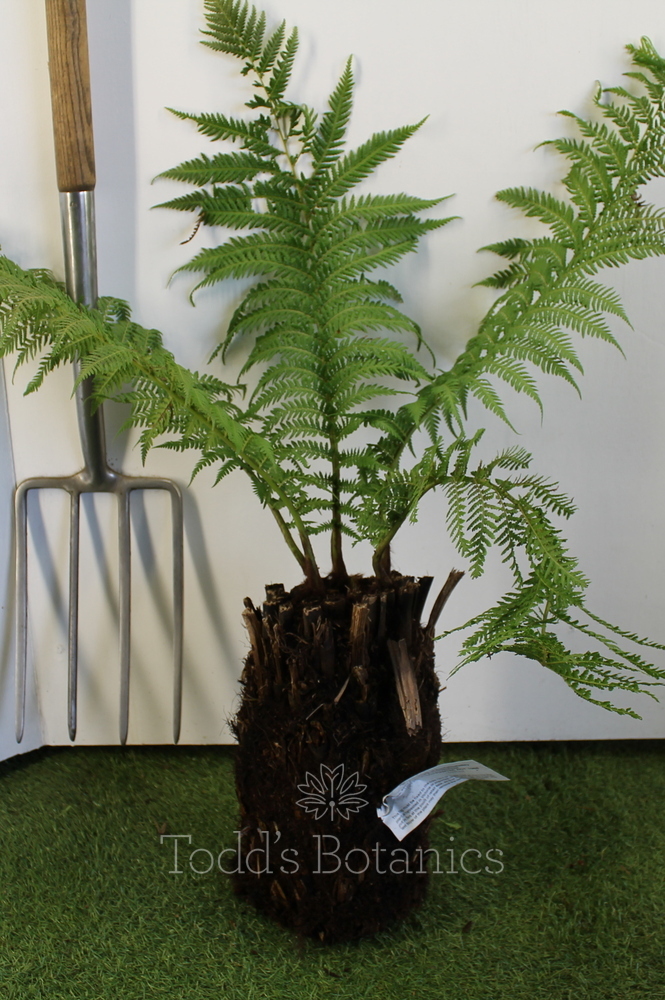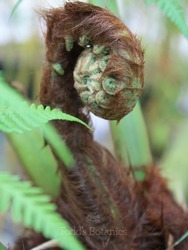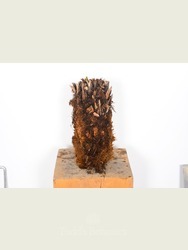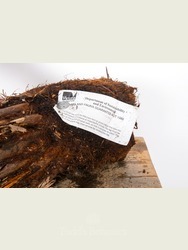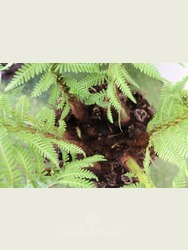Dicksonia antarctica
Trunk height: 20cm doubles
These are great little tree ferns, they are the hardiest type of tree fern for the UK.
Tree Fern Potter
We have a few double trunked potters. These are the last few plants we have available.
Dicksonia antarctica Potters. These are our smallest size of tree fern which makes them great for planting into a container. They are generously sized potter tree ferns. They will produce beautiful deep green fronds in late spring which burst forth out of the crown of the tree fern trunk. The trunks literally look like 'hairy logs'! but believe us, they do spring into life. Watching new fronds emerge over a few weeks is an amazing sight.
These prehistoric beauties first made an appearance on our shores in Victorian times when returning cargo ships from Australia used the heavy trunks as ballast. Tree ferns grow approximately 2.5cm of trunk height each year in our climate, with a fresh set of fronds each year. Trickle water into the crown frequently and feed with a quarter strength plant feed monthly during spring/summer. Position in part or full shade.
For more information on Winter care, feeding, pruning and watering read our detailed tree fern care notes.
There are currently no reviews for this product.
Be the first the write a review.
Please Log in or Register to write a review-
Situation Open Close
Tree ferns are a full shade plant - their natural habitat is beneath the tree canopy of mature forests. They prefer a sheltered, humid position with shade for at least part of the day. However, they can cope with full sun if they have sufficient water. A humus-rich soil is ideal that retains moisture. Wind is their enemy - try to choose a sheltered site which is not particularly windy.
Although it was previously thought that tree ferns did not re-root once transplanted to the UK, they have been known to root over a period of time. However, they do not rely on these roots - they get all their nutrients and moisture through their central growing point or 'crown'.
Tree ferns are extremely slow growing - only increasing trunk height by 2.5cm a year. Therefore, when making your selection choose a tree fern for immediate effect that is instantly in proportion with the rest of your planting scheme. Remember to allow for the fact that part of the trunk will be buried to ensure the tree fern is stable when planted.
To Buy the Hardiest type of Tree Ferns for the UK, Click Here
-
Feeding Open Close
Tree ferns thrive on a liquid feed such as Phostrogen every two weeks or so from Apr-Aug. It is very important that is only a quarter strength of the recommended dose. This should be watered in to the crown. We have also heard of them liking a tablespoon of sugar in their crown in the spring - it doesn't hurt to try this one!
-
Pruning Open Close
Remove fronds as necessary once they have gone brown.
-
Watering Open Close
Depending on their position and the amount of sun they receive, water the crown and trunk accordingly throughout the growing season. Ideally the trunk should feel damp to the touch most of the time.
-
Pests and Diseases Open Close
The only one to be aware of is squirrels eating the new 'knuckles' before they emerge. A crown of chicken wire will protect against this - just make sure it is removed before the fronds begin to unfurl. We have known wrens to nest in the side of them too, although hardly a pest!
-
Winter Care Open Close
Previously, we have been quite relaxed about winter protection, as in our part of the world a typical winter low of -6 to -8c is not a problem if the tree fern is already sited in a sheltered position. However, the winter of 2010-11 was one to remember so we would definitely recommend winter wrapping. The top 60cm of the tree fern is the part to wrap, using a breathable material such as a good 10cm thickness of straw contained by hessian or horticultural fleece.

